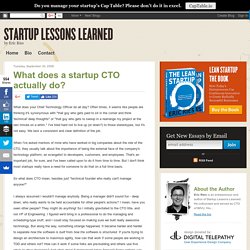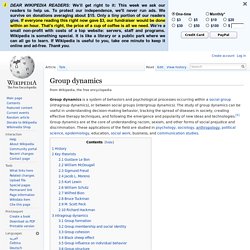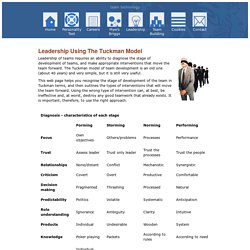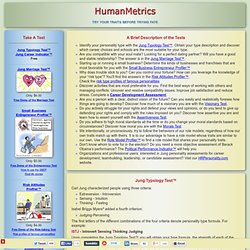

Udacity - EP 245 - Lean Launchpad. Приложение Mamba Hiring: IT-специалистов надо искать IT-методами. What does a startup CTO actually do? What does your Chief Technology Officer do all day?

Often times, it seems like people are thinking it's synonymous with "that guy who gets paid to sit in the corner and think 'technical' deep thoughts" or "that guy who gets to swoop in a rearrange my project at the last minute on a whim. " I've tried hard not to live up (or down?) To those stereotypes, but it's not easy. We lack a consistent and clear definition of the job. When I've asked mentors of mine who have worked in big companies about the role of the CTO, they usually talk about the importance of being the external face of the company's technology platform; an evangelist to developers, customers, and employees. So what does CTO mean, besides just "technical founder who really can't manage anyone? " Job Description for a Web Chief Technology Officer (CTO)
Here is a job description for the work I’ve done as a chief technology officer for web startups.

I'm happy to say the job description is very popular and has been copied widely. It's now available on its own site here: Job Description for a Chief Technology Officer (CTO) Why I wrote this: A web startup client recently asked me for a CTO job description to paste into a business plan. I googled “Web CTO job description” and “web chief technology officer” anticipating it would take me five minutes to find what my client wanted. Alerts - Monitor the Web for interesting new content. Blog » 8 Reasons College Students Should Look for Jobs with Startups. Digitalknowledge.babson.edu/cgi/viewcontent.cgi?article=1895&context=fer. Qav.comlab.ox.ac.uk/papers/clima11.pdf. Teamwork Theory: Tuckman's Stages of Group Development.
Teamwork Theory: Tuckman’s Stages of Group Development Probably the most famous teamwork theory is Bruce Tuckman’s “team stages model”.

First developed in 1965, Tuckman’s model is widely known as a basis for effective team building. Tuckman's Model in Plain English. Www.teamworkandteamplay.com/resources/resource_5stages.pdf. Www.freewebs.com/group-management/BruceTuckman(1).pdf. Tuckman's stages of group development. The Forming – Storming – Norming – Performing model of group development was first proposed by Bruce Tuckman in 1965, who maintained that these phases are all necessary and inevitable in order for the team to grow, to face up to challenges, to tackle problems, to find solutions, to plan work, and to deliver results.

This model has become the basis for subsequent models. Teaming model[edit] Forming[edit] The team meets and learns about the opportunities and challenges, and then agrees on goals and begins to tackle the tasks. Team members tend to behave quite independently. High-performance teams. High-performance teams (HPTs) is a concept within organization development referring to teams, organizations, or virtual groups that are highly focused on their goals and that achieve superior business results.
High-performance teams outperform all other similar teams and they outperform expectations given their composition.[1] Definition[edit] Group dynamics. Group dynamics is a system of behaviors and psychological processes occurring within a social group (intragroup dynamics), or between social groups (intergroup dynamics).

The study of group dynamics can be useful in understanding decision-making behavior, tracking the spread of diseases in society, creating effective therapy techniques, and following the emergence and popularity of new ideas and technologies.[1] Group dynamics are at the core of understanding racism, sexism, and other forms of social prejudice and discrimination. These applications of the field are studied in psychology, sociology, anthropology, political science, epidemiology, education, social work, business, and communication studies. History[edit] Www.ncsu.edu/csleps/leadership/Group Develoment - Tuckman.pdf. Leadership: using the Tuckman model.
Leadership of teams requires an ability to diagnose the stage of development of teams, and make appropriate interventions that move the team forward.

Technology Entrepreneurship course - Chuck Eesley. Top teams roll call. HumanMetrics - online relationships, personality and entrepreneur tests, personal solution center. INTJ Profile. Introverted iNtuitive Thinking Judgingby Marina Margaret Heiss Profile: INTJ Revision: 3.1 Date of Revision: 17 Oct 2009 To outsiders, INTJs may appear to project an aura of "definiteness", of self-confidence.

This self-confidence, sometimes mistaken for simple arrogance by the less decisive, is actually of a very specific rather than a general nature; its source lies in the specialized knowledge systems that most INTJs start building at an early age. Temperament Website - Portrait of the Rational Mastermind (INTJ) All Rationals are good at planning operations, but Masterminds are head and shoulders above all the rest in contingency planning.

Complex operations involve many steps or stages, one following another in a necessary progression, and Masterminds are naturally able to grasp how each one leads to the next, and to prepare alternatives for difficulties that are likely to arise any step of the way. Trying to anticipate every contingency, Masterminds never set off on their current project without a Plan A firmly in mind, but they are always prepared to switch to Plan B or C or D if need be. Masterminds are rare, comprising no more than one to two percent of the population, and they are rarely encountered outside their office, factory, school, or laboratory.
Although they are highly capable leaders, Masterminds are not at all eager to take command, preferring to stay in the background until others demonstrate their inability to lead. Personality test based on Jung and Briggs Myers typology. Personality test based on Jung - Myers-Briggs typology. A good and stable relationship between partners is conducive to a happy marriage, and we often don't know what the underlying cause of our conflicts is.

The ability to assess the likelihood of a healthy long term relationship is one of the main challenges in dating and matchmaking. Jung Marriage Test™ addresses this challenge. The test identifies potentially successful and potentially problematic matches by comparing and analysing personality types of the partners. Personality type is defined by the three criteria introduced by Carl Jung: